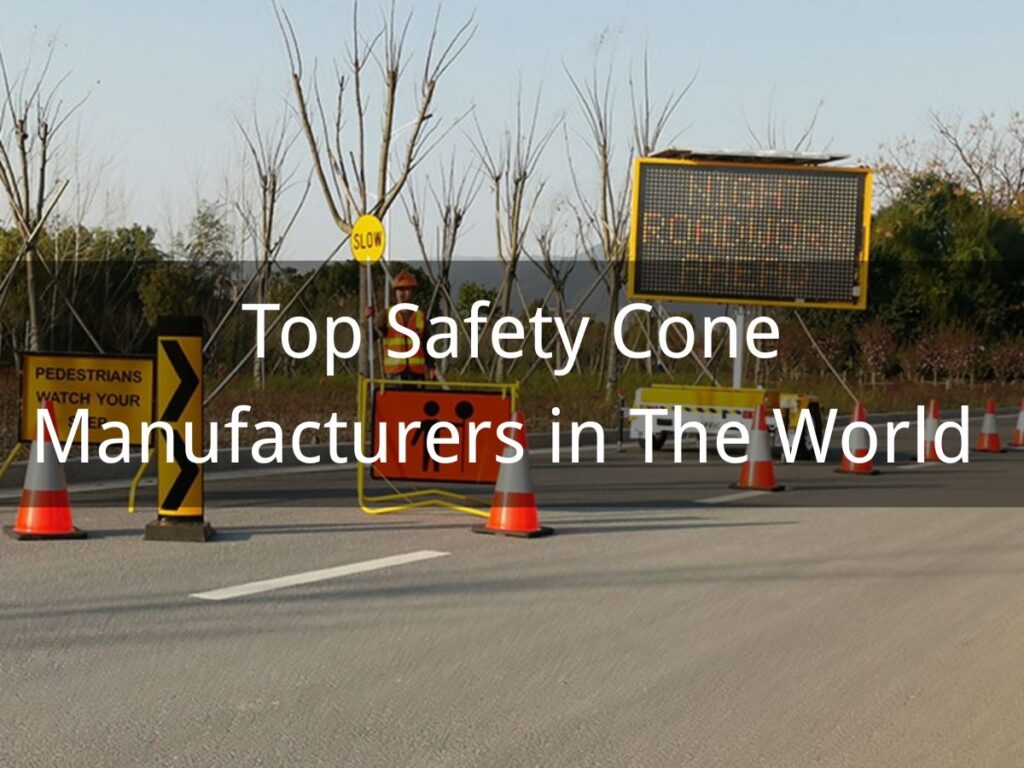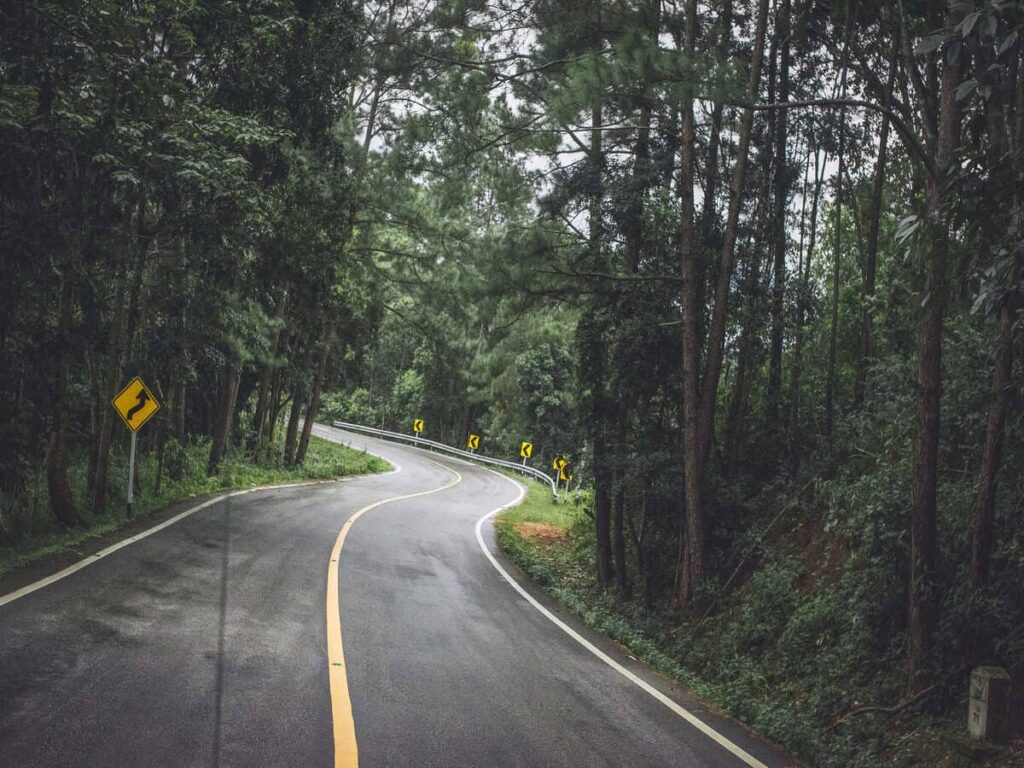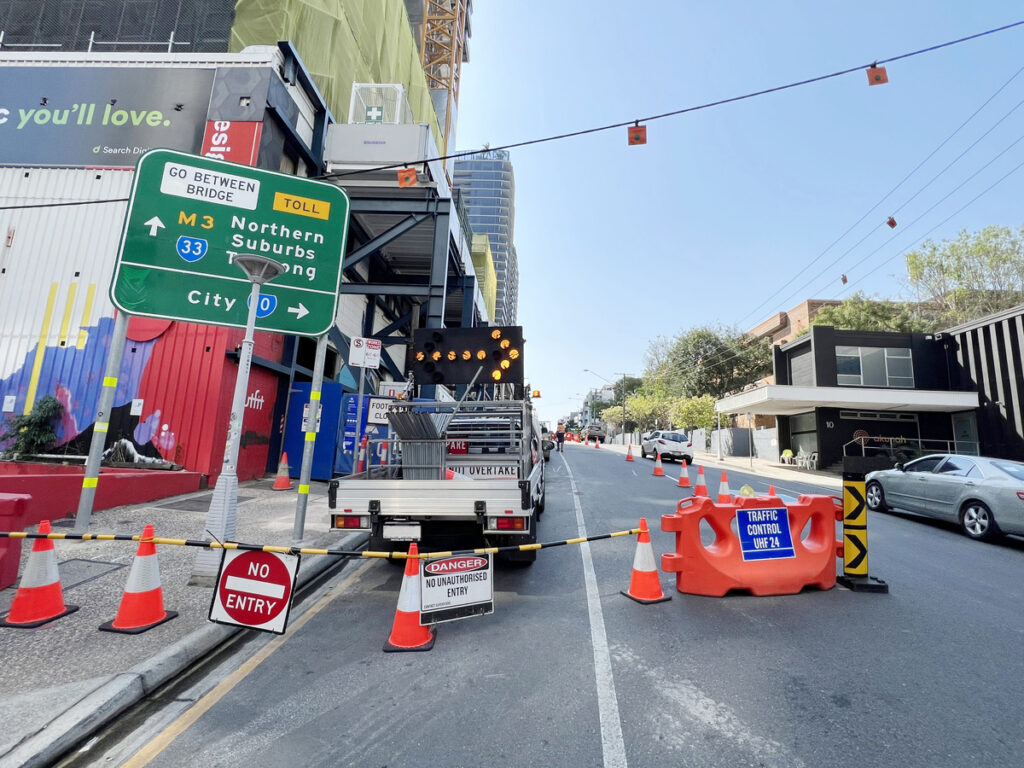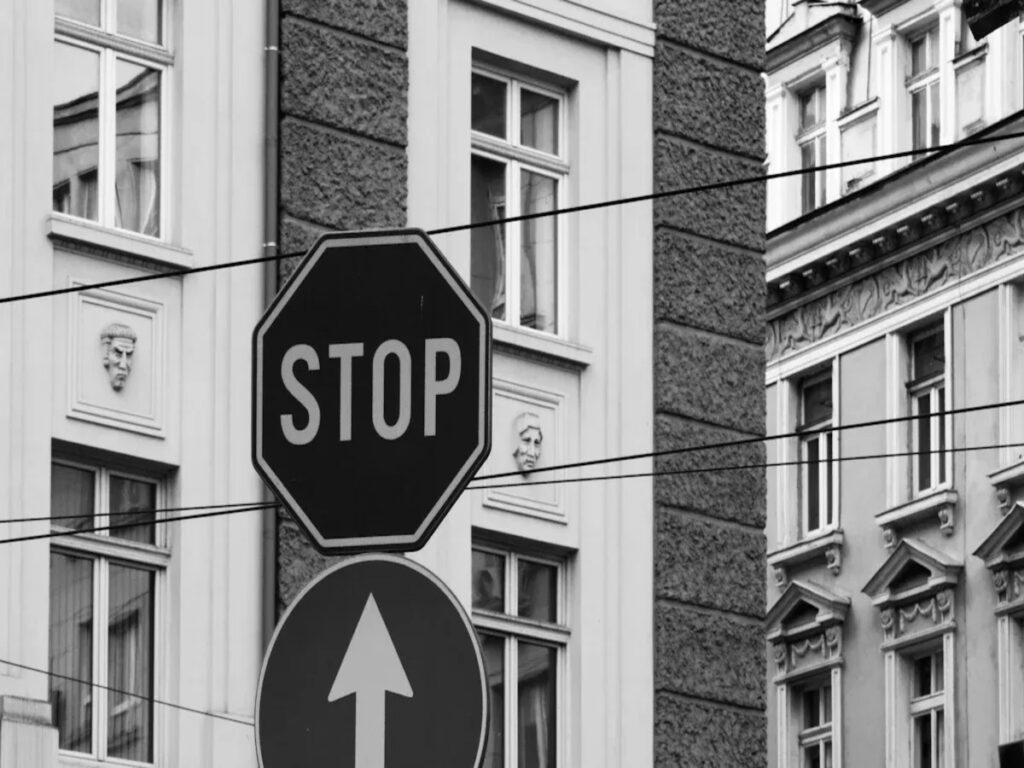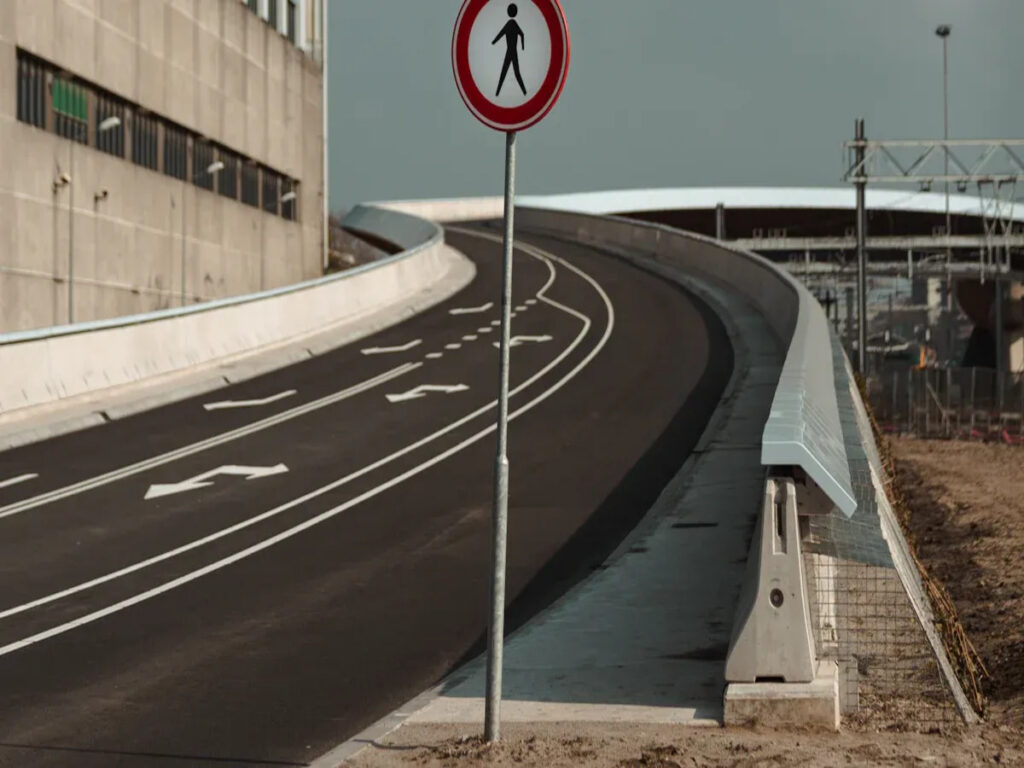
Reflektierende Zeichen sind sehr wichtig für die Verkehrssicherheit. Fahrer benötigen hochintensive prismatische Materialien, um Schilder im Dunkeln oder Regen zu sehen. Prismatic Sheeting mit hoher Intensität nutzt neue Technologien, um Anzeichen zu erleichtern. Dies hilft den Menschen, nachts und in Stürmen Zeichen zu bemerken. Viele Städte wählen hochintensive prismatische Bleche für Zeichen, weil es gut funktioniert und lange dauert.
Weitere Informationen zur Auswahl der besten reflektierenden Materialien für Verkehrszeichen, Schauen Sie sich unser an Blog So wählen Sie die besten reflektierenden Materialien für Verkehrszeichen aus. Es deckt alles ab, was Sie über die Auswahl der richtigen Materialien für optimale Leistung und Sicherheit wissen müssen.
Key Takeaways
- Hochintensive Prismatik (HÜFTE) Blatt verwendet winzige Prismen. Diese Prismen machen Straßenschilder viel heller. Die Zeichen sind nachts leichter zu sehen. Sie sind auch bei schlechtem Wetter leichter zu sehen.
- Hüftblech kann bis zu dauern 10 Jahre. Es bleibt auch bei hartem Wetter hell. Es erfüllt strenge Sicherheitsregeln. Dies macht es zu einer starken und vertrauenswürdigen Wahl.
- Die Verwendung von Hüftfolien auf Schildern und Klebeband hält die sicheren Straßen sicher. Es hilft den Fahrern, Schilder früher zu sehen. Dies kann die Anzahl der Unfälle senken.
- Hüftbleche können zunächst mehr kosten. Aber es spart im Laufe der Zeit Geld. Sie müssen Schilder nicht so oft ersetzen oder beheben.
- Hüftblech wird auf Autobahnen und Stadtstraßen verwendet. Es wird auch in Bauzonen verwendet. Dies zeigt, dass es an vielen Orten gut funktioniert.
Was ist hochintensive Prismatik (HÜFTE) Blatt?
Definition von Hüftblechen
Hochintensität prismatische Laken ist ein besonderes reflektierendes Material für Straßenschilder. Es verwendet ein mikroprismatisches Objektivdesign, um Zeichen heller zu machen. Dies hilft den Menschen, nachts oder bei schlechtem Wetter Schilder besser zu sehen. Hip -Blatt folgt strenge Regeln wie ASTM D4956-09 Typ III und IV. Viele Städte und Staaten verwenden es für Stoppschilder, Geschwindigkeitsbegrenzungszeichen, und Warnzeichen. Das Material hat normalerweise eine 10-jährige Garantie, Was bedeutet, dass es lange dauert.
Die Hüftfolie ist ungefähr viermal heller als ältere Reflexionsmaterialien. Es funktioniert sowohl an hellen als auch an dunklen Orten gut. Die oberste Schicht hält die Schilder vor Kratzern und hilft ihnen, neu auszusehen.
Zusammensetzung
Prismatische Blatt mit hoher Intensität hat mehrere wichtige Schichten. Die Hauptschicht verwendet Full-Cube-Mikroprismen, um Licht zurück zu den Treibern zu reflektieren. Diese Mikroprismen sind nicht aus Metall, Sie sind also besser für die Umwelt. Eine starke Deckschicht bedeckt die Oberfläche und schützt sie vor Beschädigungen. Die darunter liegende Klebeschicht sorgt dafür, dass es auf Metall- oder Aluminiumschildern haftet. Dieses Design macht die Folie stabil und hell für bis zu 10 Jahre. Es gibt es in vielen Farben wie Rot, Gelb, Grün, Blau, und weiß. Dadurch eignet es sich für verschiedene Arten von Schildern.
- Spezielles mikroprismatisches Design für hohe Reflektivität
- Einfach zu bedienen, Haftklebstoff ohne Lösungsmittel
- Starker Decklack für langlebige Schilder
- Helle Farben für den Einsatz bei Tag und Nacht
- Erfüllt viele ASTM-Qualitätsstandards
Vergleich mit anderen Materialien
Prismenfolie mit hoher Intensität ist besser als einige andere reflektierende Materialien. Technische Folien bestehen aus Glasperlen und sind nicht so hell. Hip Sheeting verwendet prismatische Technologie, Es ist also ungefähr viermal heller. Diamond -Grade -Blatt ist noch heller, wird aber für besondere Zeichen verwendet. Hüftblech ergibt eine gute Mischung aus Helligkeit, Stärke, und Preis.
| Materialtyp | Reflexionsvermögen | Typische Verwendung | Lebensdauer |
|---|---|---|---|
| Ingenieurqualität | Niedrig | Allgemeine Zeichen | 7 Jahre |
| Hochintensive Prismatik | Hoch | Verkehr, Warnung, Arbeitszonen | 10 Jahre |
| Diamantqualität | Sehr hoch | Kritische Zeichen, Autobahnen | 12+ Jahre |
Der Nationaler Sicherheitsrat Sagt, dass die Verwendung reflektierender Materialien wie Hüftfolien die Nachtstürze bis nach bis zu den Abfällen abschneiden kann 50%. In Sioux City, Die Crash -Raten gingen ab 38% Nach Verwendung hellerer Zeichen. Chevron -Zeichen mit Hüftblech waren 286% heller bei 225 Meter. Diese Tatsachen zeigen, wie wichtig hohe Intensität und Reflexionsvermögen für die Verkehrssicherheit sind.
Häufige Anwendungen von Hüftblechen
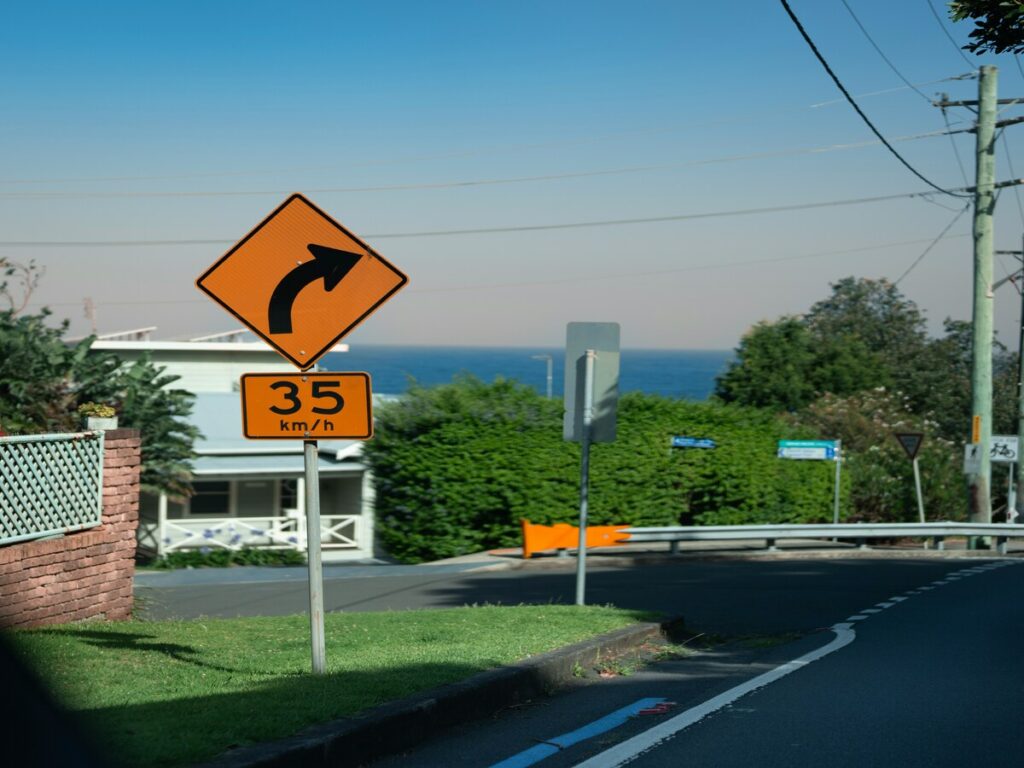
Autobahnen und Hauptstraßen
Autobahnen und Hauptstraßen benötigen Schilder, die leicht zu sehen sind. Hüftblech macht Schilder hell, Die Fahrer können sie also von weitem erkennen. Viele Straßenabteilungen verwenden Hüftbleche für Stoppschilder und Geschwindigkeitsbegrenzungsschilder. Sie verwenden es auch für Warnzeichen. Das mikroprismatische Design hilft den Fahrern, Schilder schnell zu bemerken, Auch wenn es schnell fährt oder wenn es dunkel ist. Hip Reflective Tape wird auf Leitplanken und Hindernissen verwendet, um Straßen sicherer zu machen. Dieses Material wird durch schlechtes Wetter nicht ruiniert, Schilder bleiben also lange hell.
Städtische Straßen und Verkehrszeichen
Städte verwenden Hüftbleche für viele Straßen- und Verkehrsschilder. Stadtplaner wählen dieses Material aus, weil es ASTM D4956 Typ IV -Regeln erfüllt. Es verwendet auch eine spezielle Polycarbonat -Würfel -Ecktechnologie. Hip -Blech eignet sich gut für Verkehrssteuerungsschilder und Straßennamenschilder. Es ist auch gut für Overhead Guide -Zeichen. Das prismatische Design hilft den Menschen, Zeichen von weiter weg zu lesen. Dies ist hilfreich für Fahrer und Wanderer in geschäftigen Stadtgebieten.
- Hip Sheeting erfüllt schwierige Leistungsregeln.
- Es ist ideal für City Street und Kreuzungsschilder.
- Es wird für wichtige Aktionszeichen und Verkehrskontrollmarkierungen vorgeschlagen.
Hip Reflective Tape wird auch für Zebrastreifen und Fahrradwege verwendet. Dies macht die Straßen der Stadt für alle sicherer.
Bauzonen und vorübergehende Zeichen
Bauzonen brauchen Schilder, die Tag und Nacht hervorstechen. Hip -Blatt funktioniert gut auf temporären Schildern in Arbeitszonen. Studien zeigen, dass hüft mikroprismatisch. Zum Beispiel, Eine Studie testete orange Arbeitszonenzeichen nachts Zeichen. Es stellte fest 175 Füße entfernt. Alte Materialien konnten nur gelesen werden 148 Füße entfernt.
| Blattart | Beschreibung | Mittlere Lesbarkeitsabstand (ft) |
|---|---|---|
| ASTM Typ III | Hochintensität eingekapselte Objektivglasperle | 148 |
| ASTM Typ VIII | Super-High-Intensität mikropromatisch (fluoreszierend) | 175 |
| ASTM Typ IX | Sehr hohe Intensität mikropromatisch (fluoreszierend) | 169 |
Hip Reflective Tape hilft den Fahrern, sich verändert und umweg. Es hilft ihnen auch, Gefahren zu erkennen, was Unfälle in Bauzonen senkt.
Vorteile von Hüftblech für reflektierende Zeichen
Hohe Sichtbarkeit
Hüftblech macht Schilder sehr hell. Das mikroprosimatische Design hilft Zeichen, mehr zu leuchten. Dies ermöglicht die Leute, Schilder von weitem zu sehen. Fahrer können Schilder schnell bemerken, sogar nachts oder im Regen. Studien sagen, dass Hüftbleche den Fahrern helfen, Anzeichen früher zu sehen. Dies bedeutet, dass sie schneller reagieren können. Die folgende Tabelle zeigt, wie sich die Hip -Blatt in Tests gut abschneidet:
| Metrisch / Finden | Details |
|---|---|
| Luminanzkontrast | 6200:2066 CD/m² gibt die am weitesten bequemen und Blendungsentfernungen für die frühe Anzeichenerkennung |
| Statistische Erkenntnisse | Mikroprismatische Folgen zeigen große Verbesserungen in der Sichtbarkeit und Lesbarkeit gegenüber älteren Typen |
Die Forscher überprüften acht mikroprosimatische Reflexionszeichen -Typen. Dazu gehörten Stoppschilder und Chevrons. Sie fanden, dass diese Zeichen den Fahrern geholfen haben, besser aufzuhören. Es gab weniger Spurfehler. Es wurden keine schlechten Auswirkungen darauf, wie Fahrer gehandelt wurden. Zustände sagen nun, fluoreszierende gelbe und mikroprisimatische Reflexionsstreifen zu verwenden. Dies macht Zeichen heller und sicherer.
Haltbarkeit
Hip -Blatt bleibt lange stark. Es funktioniert gut auf reflektierenden Zeichen und Klebeband. Es kann anhalten 10 Jahre draußen. Dieses Material trifft harte ASTM- und FHWA -Regeln. Labor- und Feldtests zeigen, dass Hüftbleche seinen Glanz halten. Retrorefektometer prüfen, wie helles Hüftblech im wirklichen Leben ist. Diese Tests erweisen sich nach jahrelanger Sonne hell, bleiben hell, Regen, und Schnee.
Kosteneffizienz
Hüftblech spart Geld für Städte und Straßengruppen. Es dauert lange, Schilder benötigen also weniger Änderungen. Dies bedeutet weniger Geld für die Festlegung von Schildern ausgegeben. Die ersten Kosten können höher sein, Aber Sie sparen später mehr. Hip Sheeting hält Schilder leuchtend und leicht zu lesen.
Tipp: Die Verwendung von Hüftblechen für Schilder spart Geld und hält die Straßen für lange Zeit sicher.
Verbesserte Sicherheit
Hip -Blatt hilft, Fahrer und Wanderer zu schützen. Seine starke Helligkeit und Reflexionsvermögen helfen den Menschen, bei allen Wetters Zeichen zu sehen. Hip Reflective Tape markiert Gefahren, Barrieren, und Zebrastreifen. Dies senkt die Wahrscheinlichkeit von Unfällen. Wenn Schilder hell und klar bleiben, Jeder bekommt bessere Warnungen und Anweisungen.
So wählen Sie das richtige reflektierende Material für bestimmte Bedürfnisse aus
Hochverkehrsgebiete
Das beste reflektierende Material für belebte Straßen zu wählen ist wichtig. Es hilft dabei, Fahrer und Menschen sicher zu gehen. Besetzte Straßen benötigen Schilder, die hell und leicht zu sehen bleiben. Diese Zeichen müssen auch bei viel oder bei schlechtem Wetter gut funktionieren. Experten sagen, Materialien zu verwenden, die nicht leicht verblassen oder brechen. Diese Materialien sollten viele Jahre lang bleiben.
- Wie gut ein Schild funktioniert, hängt von der Straße ab und wie viele Autos es benutzen.
- Besetzte Orte brauchen Schilder, die nicht verblassen oder beschädigt werden.
- Das Überprüfen und Beheben von Schildern hilft ihnen oft, besser zu arbeiten.
- Wenn Sie sich jeden Ort ansehen, können Sie das beste Schild und Material auswählen.
Eine Studie in Ohio zeigte, dass reflektierende Zeichenposten den Fahrern helfen, Anzeichen schneller zu sehen. Reflektierende Chevron -Zeichen waren 286% heller bei 225 Meter. Dies machte Straßen für alle sicherer. Untersuchungen ergaben 46% an geschäftigen Orten.
| Zeichenfarbe | Standort | Mittlere Lebensdauer (Jahre) | Anmerkungen zur Retrorefektivität und Wartung |
|---|---|---|---|
| Blau | Kroatien | 28 – 35 | Dauert am längsten, Ideal für belebte Straßen. |
| Rot | Kroatien | 10 | Benötigt mehr Schecks an geschäftigen Orten. |
Harte Wetterbedingungen
Orte mit viel Regen, Nebel, oder Schnee benötigen spezielle Zeichen. Diese Zeichen müssen bei jedem Wetter leicht zu erkennen sein. Hip Sheeting verwendet mikroprosimatische Technologie, um die Anzeichen hell zu halten. Dies funktioniert auch bei schlechten Lichtverhältnissen oder Stürmen. Materialien, die den ASTM D4956 -Regeln erfüllen, sind stark und bleiben lange hell.
Tipp: Verwenden Sie an Orten mit schlechtem Wetter Hüftfolien. Es hält die Anzeichen klar und leicht das ganze Jahr über zu sehen.
Wartungs- und Ersatzzyklen
Zeichen, die länger dauern, sparen Geld und Zeit. Viele Staaten ändern alle Hüftblechzeichen 10 Zu 12 Jahre. Einige Zeichen halten bis zu 15 Jahre. Dies bedeutet, dass Schilder nicht so oft ersetzt werden müssen. Es kostet auch weniger, sie zum Laufen zu halten. Studien zeigen, dass Hüftbleche länger hell bleiben als alte Materialien. Dies macht es zu einer guten Wahl für Projekte, die dauern müssen.
Der North Carolina Punkt gefundene Hüftblech bedeutet weniger Ersatz und weniger Arbeiten über 50 Jahre. Einige Anzeichen halten noch länger als ihre Garantie. Dies hält die Straßen sicher und hilft, Geld zu sparen.
Fallstudie: Anwendungen in der Praxis
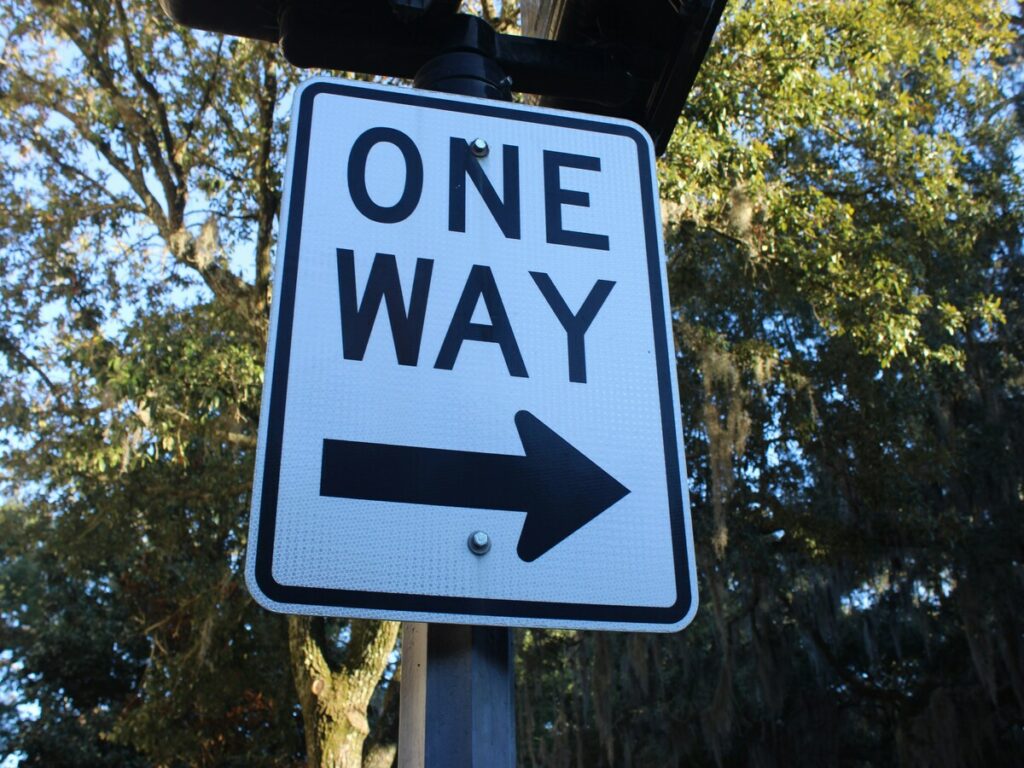
Erfolgreiche Einbeziehung von Hüftblechen in verschiedene Regionen
Viele Orte auf der ganzen Welt verwenden Hüftbleche für Straßenschilder. Dieses Material macht die Straßen sicherer und leichter zu reisen. Asien-Pazifik verwendet Hüftblech am meisten. Städte wachsen dort schnell, Und große Projekte wie Indiens Smart City Mission helfen dies, dies zu erreichen. Nordamerika ist der nächste. Es hat starke Regeln und Programme für Straßensicherheit wie "Auf dem Weg zu Null -Todesfällen." Europa verwendet auch viel Hüftblech viel. Länder wie Deutschland und Großbritannien kümmern sich um Sicherheit und die Umwelt. Der Nahe Osten und Afrika nutzen mehr Hüftblech, während sie neue Straßen und intelligente Städte bauen. Lateinamerika beginnt mehr Hüftbleche zu verwenden, weil die Menschen sicherere Straßen wollen.
| Region | Marktanteil (%) | Wichtige Adoptionstreiber | Bemerkenswerte Regierungsinitiativen / Programme |
|---|---|---|---|
| Asien -Pazifik | 46.9 | Schnelle Urbanisierung, Infrastrukturprojekte, Steigende Fahrzeugnummern, Starke Fertigungsbasis | Indiens Smart City Mission, Chinas Gürtel- und Straßeninitiative |
| Nordamerika | 25.6 | Strenge Verkehrssicherheitsvorschriften, Advanced Technology Adoption, hohe Infrastrukturausgaben | Kampagne „Auf dem Weg zu Zero Deathss“ |
| Europa | 20.4 | Starke regulatorische Rahmenbedingungen, Konzentration auf die Verkehrssicherheit, Nachhaltigkeit Betonung | Vision Zero Initiative |
| Naher Osten & Afrika | 4.5 | Wachsende Infrastrukturprojekte, Erhöhtes Bewusstsein für die Verkehrssicherheit | Afrikas Jahrzehnt der Aktion für die Verkehrssicherheit 2021-2030 |
| Lateinamerika | 2.6 | Verbesserung der Straßeninfrastruktur, Wachstum der Verkehrssicherheit Fokus | N / A |
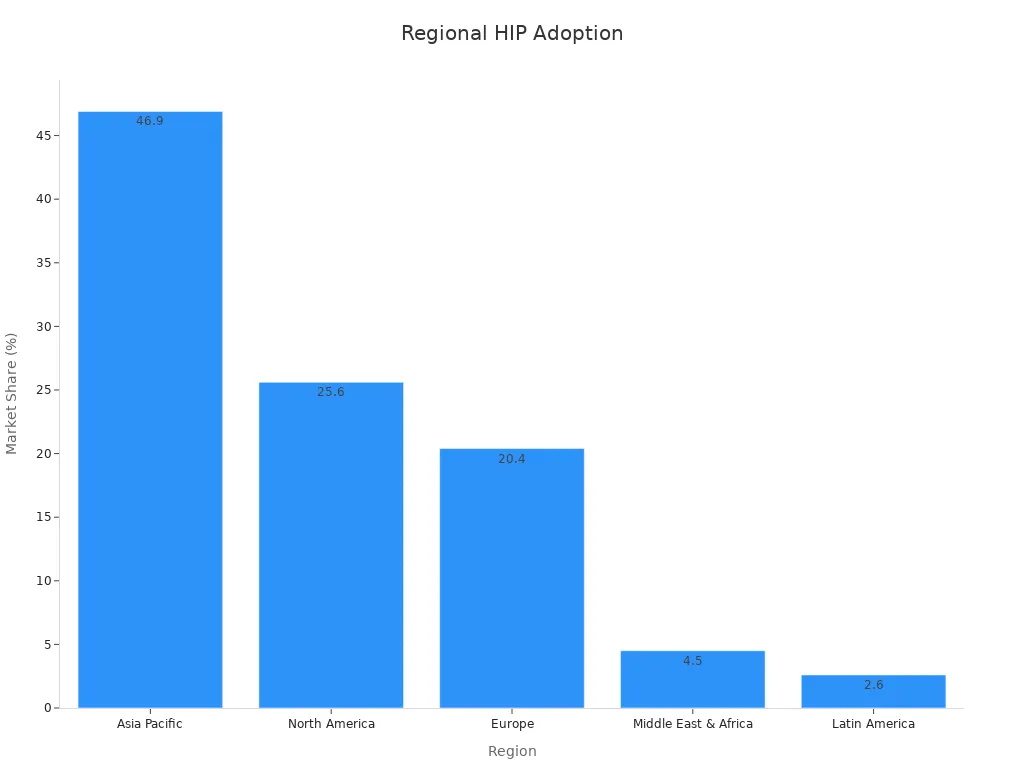
Der asiatisch-pazifische Raum wächst am schnellsten, weil es viel für Straßen und Städte ausgibt. Die strengen Regeln Nordamerikas tragen dazu bei. Europa kümmert sich um Sicherheit und die Umwelt, Es verwendet also auch Hüftbleche. Diese Orte zeigen, dass Hüftbleche für wichtige Sicherheitsbedürfnisse gut funktionieren.
Leistung bei extremen Wetterbedingungen
Hip -Blatt funktioniert bei allen Arten von Wetter gut. An Orten mit viel Regen, Nebel, oder Schnee, Schilder müssen hell bleiben. Hip Sheeting verwendet Mikroprise, um Licht an die Treiber zurückzuschicken. Dies hält die Zeichen hell, selbst wenn das Wetter schlecht ist. Zum Beispiel, in Kanada und Nordeuropa, Hip -Blatt hält die Schilder im langen Winter klar. An tropischen Orten, Das Material verblasst nicht aus starker Sonne oder starkem Regen.
Notiz: Hip -Blatt hilft den Fahrern, Schilder aus der Ferne zu sehen, sogar in Stürmen oder nachts. Diese zusätzliche Helligkeit kann Unfälle verhindern und Leben retten.
Viele Städte wählen Hüftbleche, weil es das ganze Jahr über gut funktioniert. Das Material bleibt viele Jahre hell, Es ist also eine gute Wahl für Straßen mit hartem Wetter. Hip -Blatt hilft, Straßen sicher zu halten und Schilder leicht zu lesen, Egal wie das Wetter ist.
Prismatische Bleche mit hoher Intensität ist die obere Wahl für reflektierende Zeichen.
- Untersuchungen zeigen, meistens an einigen Kreuzungen.
- Das Upgrade auf Hüftbleche kostet nicht viel, wenn Sie über die Sicherheit nachdenken, die sie mit sich bringt.
- Die Verwendung von Hüftblechen wächst aufgrund neuer Technologien und strengen Sicherheitsgesetze schnell.
- Hüftblech folgt den besten Sicherheitsregeln und hilft dabei, die Straßen überall sicherer zu machen.
Wenn Sie Hüftbleche auswählen, länger dauern, und helfen, die Menschen zu schützen.
FAQ
Was unterscheidet die Hüftblech von anderen reflektierenden Materialien?
Hip -Blatt verwendet Mikroprise, um mehr Licht zu reflektieren. Dieses Design macht Zeichen heller und einfacher zu sehen. Viele Städte wählen Hip -Blatt, weil es länger dauert und strenge Sicherheitsstandards erfüllt.
Wie lange dauert Hüftbleche auf Straßenschildern??
Die meisten angesagten Bleche dauern bis 10 Jahre. Einige Schilder bleiben noch länger hell. Regelmäßige Schecks helfen dabei, die Zeichen in gutem Zustand zu halten.
Kann Hüftblech extremes Wetter greifen?
Ja. Hip -Blatt funktioniert gut im Regen, Schnee, Nebel, und starkes Sonnenlicht. Das Material hält Schilder in allen Jahreszeiten sichtbar und hell.
Wo verwenden Menschen am häufigsten Hüftbleche??
Menschen verwenden Hüftblech auf Autobahnen, Straßenstraßen, und in Bauzonen. Es funktioniert auch gut für Warnzeichen und Leitschilder.
Ist für Städte und Städte angesagte Bleche kostengünstig?
Hip -Blatt spart im Laufe der Zeit Geld. Städte ersetzen Schilder seltener, weil das Material länger dauert. Dies senkt die Wartungskosten und hält die Straßen sicherer.



